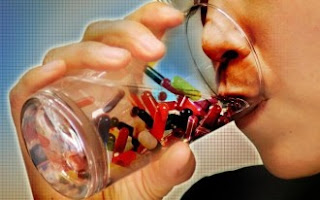According to the new research, hospitals are
not the only places where drugs are used rather the use of drugs at homes is
also high. The matter causes issues for the water management as these drugs
become a hurdle for them in the wastewater.
Although
the treatment of wastewater is done through different treatment processes but
they are not suitable enough every time to remove the pharmaceuticals from the
water supply. This indicates that the drugs end up to the environmental waters.
The issue is being watched by the policymakers deeply and eventually the new
regulations are expected for the utilities.
The
question arises that if these drugs are winding up in the sewage system, from
where they are coming? Some researchers from Leuphana University took the
question in the examination and published the results of the study according to
which the major source of pharmaceutical drugs are the households in the
wastewater. If a comparison is made with the hospitals, then the findings say
that they contribute very less to this pollution. The quantity of the drug
contaminants discharged from this source is small.
Even
the share of painkillers in the hospitals is not of great amount. Metamizole
which is a painkiller used very widely constitutes 22 percent share of the
entire consumption. The study also identified the quantity of sedative
Clomethiazole consumed in the hospitals along with the neuroleptic quetiapine
which can be considered high.
Another
drug that has considerably higher amount is the Moclobemide which is an
antidepressant.
One
of the leading persons in the study, Manuel Herrmann gave the demonstrations of
the importance of the research. According to him, the study has been able to
make them aware of the patterns of consumption by providing a clear picture of
the things making the wastewater polluted. The method used by them regarding
the procedures of measurement, there is the combined benefit of not being very
complex and also it is cheaper. That is why the prediction of pollution is
simple and the reaction of the policy and management is appropriate.
PPCPs
are known for long and they are not the new matter for the water sector. These
products are able to get escaped through the treatment plants of wastewater and
wind in the waterways that has the water for drinking purpose as well.
Environmental
Protection agency has kept these pharmaceuticals in the Third Contaminant
Candidate List (CCL3). Some of the main elements of the study are as
follow;
There
is a difference between the patterns of drug usage among hospitals and the
particular health institutions. The consumption of neurological drugs is more
in the nursing homes and the psychiatric hospitals. If total contribution of
the drugs is observed, it will tell us that the households are contributing
more as compared to the health institutions.
For
years pharmaceutical companies were dumping drugs to sewage system and wastewater
that eventually end up in our drinking water. One of the alternative of
insuring clean water supply to population, that is pure and healthy, is to
implement AtmoWater unique AWS 100 systems, which is non polluting, clean and
great testing water.
